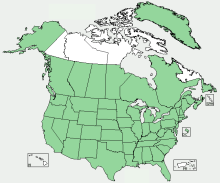Cleavers
Also known as Goosegrass
Botanical name: Galium aparine
Family: Bedstraw (Rubiaceae)
Collectability: plentiful, common, widespread, weed
Main benefit
Spring cleansing tonic
Use - overview











Features and Identification
Habitat
Type: hedges, waste places
Distribution: throughout northern hemisphere
Other: patch forming
General
Growth type: herb
Cycle: annual
Height: up to 2 meters or more
Other: clingy, sticks to clothes
 Leaf
Leaf
Shape: lanceolate
Texture: coarse
Arrangement: whorl of 6-8
Edge: fine barbed bristles
 Stem
Stem
Texture: coarse
Cross Section: square
Other: straggly, tangled
 Flower
Flower
Diameter: tiny
Arrangement: small stalked clusters from base of leaves
When: May to September
Colour:
 Seed
Seed
Shape: round
Colour: green
Size: 4mm
Other: tiny, clingy bristles on surface
Type: hedges, waste places
Distribution: throughout northern hemisphere
Other: patch forming
General
Growth type: herb
Cycle: annual
Height: up to 2 meters or more
Other: clingy, sticks to clothes
 Leaf
LeafShape: lanceolate
Texture: coarse
Arrangement: whorl of 6-8
Edge: fine barbed bristles
 Stem
StemTexture: coarse
Cross Section: square
Other: straggly, tangled
 Flower
FlowerDiameter: tiny
Arrangement: small stalked clusters from base of leaves
When: May to September
Colour:

 Seed
SeedShape: round
Colour: green
Size: 4mm
Other: tiny, clingy bristles on surface
Distribution Map

Caution Notes
 Contact with sap my cause irritation in sensitive people.
Contact with sap my cause irritation in sensitive people.Consumption of the barbs may cause irritation. Cook to soften.
May be mistaken for Sweet Woodruff G. odoratum. See Collection below.
When Available?

 March to August - best March to June
March to August - best March to June all year
all year August and September
August and SeptemberParts with black and white icons are for non-culinary use
Culinary Use
Flavour
Rating and Description:

 bitter
bitter
How to Consume

 cooked, tea, juice, leaf curd
cooked, tea, juice, leaf curd
 roasted, sprouted
roasted, sprouted
Special preparation
All parts: cook to soften barbs. Does not apply to juice and leaf curd.
Used as ...

 food
food
 food, beverage (coffee substitute)
food, beverage (coffee substitute)
Rating and Description:

 bitter
bitterHow to Consume

 cooked, tea, juice, leaf curd
cooked, tea, juice, leaf curd  roasted, sprouted
roasted, sproutedSpecial preparation
All parts: cook to soften barbs. Does not apply to juice and leaf curd.
Used as ...

 food
food food, beverage (coffee substitute)
food, beverage (coffee substitute)
Medicinal Use
Action:
Aerial parts: anticancer, anti-inflammatory, aperient, astringent, depurative, diaphoretic, diuretic, febrifuge, hepatic, tonic, vulnerary
May treat:
Aerial parts: decoction, juice: cancer, cystitis, insomnia, glandular fever, ME, tonsillitis, hepatitis;
poultice: eczema, psoriasis, seborrhoea, ulcers, wounds and other skin problems
Aerial parts: anticancer, anti-inflammatory, aperient, astringent, depurative, diaphoretic, diuretic, febrifuge, hepatic, tonic, vulnerary
May treat:
Aerial parts: decoction, juice: cancer, cystitis, insomnia, glandular fever, ME, tonsillitis, hepatitis;
poultice: eczema, psoriasis, seborrhoea, ulcers, wounds and other skin problems
Other Use
 filter
filter red dye
red dye
Collection, Storing and Notes
Collection
Best in May and June when in flower.
Cleavers can be mistaken for Sweet-scented Bedstraw G. odoratum, a close relative. However, they are only superficially similar, mostly when Cleavers is young. Sweet-scented Bedstraw has a relatively short season (March to June), lacks the sticky barbs present on the entire Cleavers plant, and has a distinct smell of fresh cut hay when bruised. Take care in identifying this plant correctly, as Sweet-scented Bedstraw contains a chemical which may prevent blood clotting.
Best in May and June when in flower.
Cleavers can be mistaken for Sweet-scented Bedstraw G. odoratum, a close relative. However, they are only superficially similar, mostly when Cleavers is young. Sweet-scented Bedstraw has a relatively short season (March to June), lacks the sticky barbs present on the entire Cleavers plant, and has a distinct smell of fresh cut hay when bruised. Take care in identifying this plant correctly, as Sweet-scented Bedstraw contains a chemical which may prevent blood clotting.
Key
Plant parts:
 leaf
leaf
 stem or trunk
stem or trunk
 sap
sap
 root, bulb, tuber and other below ground parts
root, bulb, tuber and other below ground parts
 flower
flower
 fruit
fruit
 seed
seed
Parts with black and white icons in the availability section are for non-culinary use
Use:
 culinary use
culinary use
 medicinal use
medicinal use
 household use
household use
Other:
 caution
caution
 leaf
leaf stem or trunk
stem or trunk sap
sap root, bulb, tuber and other below ground parts
root, bulb, tuber and other below ground parts flower
flower fruit
fruit seed
seedParts with black and white icons in the availability section are for non-culinary use
Use:
 culinary use
culinary use medicinal use
medicinal use household use
household useOther:
 caution
caution
Glossary
General Glossary
Glossary of Medicinal Terms and Nutritive Substances
- lanceolate: shaped like a lance head; long, tapering to end
- whorl: ring of leaves around stem
Glossary of Medicinal Terms and Nutritive Substances
- anticancer: used in the treatment of cancer
- anti-inflammatory: reduces inflammation of joints, injuries etc. (see also demulcent, emollient)
- aperient: mild laxative
- astringent: causes localised contraction of blood vessels and tissue, reducing the flow of blood, mucus, diarrhoea etc.
- depurative: eliminates toxins and purifies the system, especially the blood
- diaphoretic: promotes perspiration, aids the skin in elimination of toxins
- diuretic: increases secretion and elimination of urine
- febrifuge: reduces fever; use only for dangerously high temperature; a raised temperature is the body's way of burning up the pathogen
- hepatic: acts upon the liver
- tonic: improves general health, bringing steady improvement
- vulnerary: promotes healing of wounds (applied externally)




